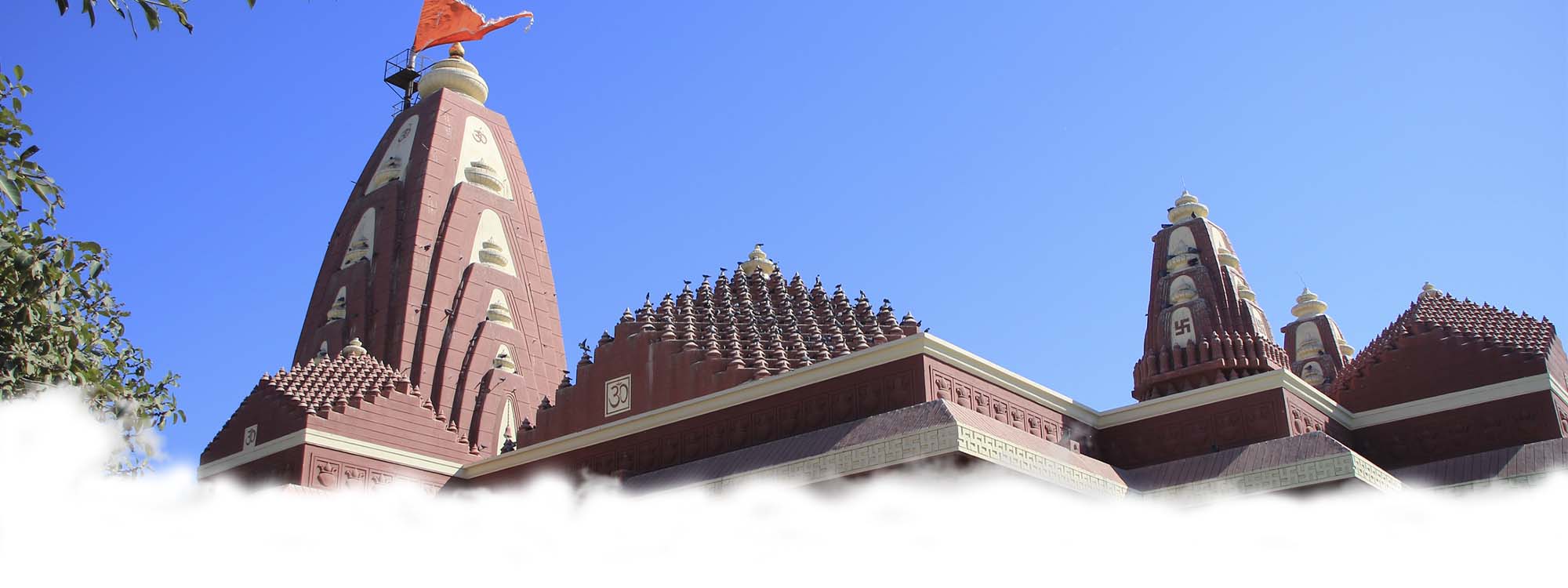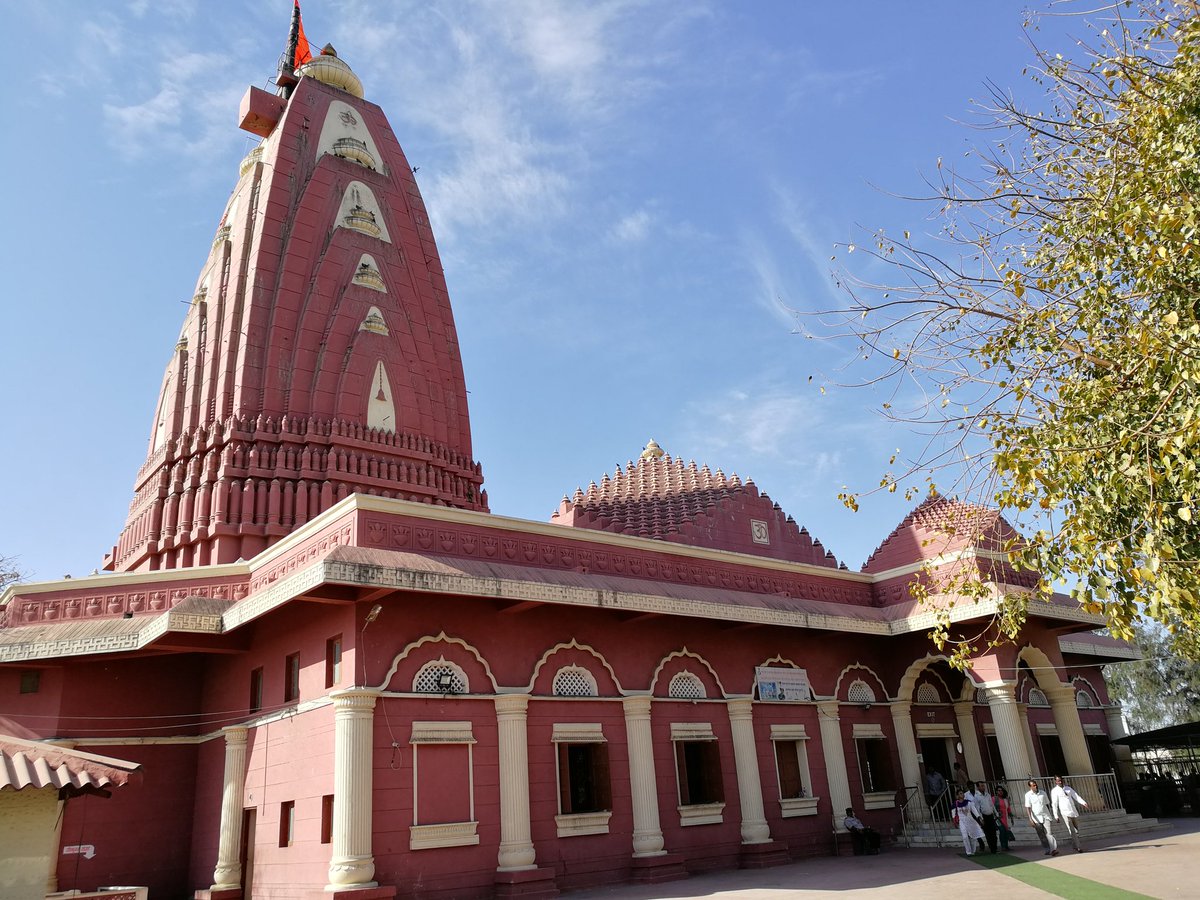
Nageshwar Temple
Located on the path between Gomati Dwarka and the Bait Dwarka Island on the coastline of Saurashtra, Nageshwar Temple is popularly known as the Nagnath Temple. The Jyotirlinga shrine installed in the sanctum is called Nageshwar Mahadev and attracts thousands of pilgrims every year.
History Behind the Nageshwar Temple
The Nageshwar Temple has an intriguing tale associated with its origins. Story has it that once there was a ruthless demon called Daruka. He was a savage who liked to torture people. But he was also a devout devotee of Lord Shiva. Once a merchant named Supriya, wanting to see this famous devotee of Shiva, visited Daruka. Daruka lived with his wife Daruki in the forest of Darukavanam.
Supriya was an accomplished worshipper of Shiva. Daruka then asked Supriya to teach him the right way to worship Shiva, including all the norms and rituals of performing Tapa (penance). Afraid that Daruka will use the powers gained from his Tapa to torture people, Supriya refused to teach him. Daruka did not take this well. Furious, he began to torture Supriya. Unmoving in his faith in Shiva, Supriya remained unaffected by this torture.

Impressed by Supriya’s bravery and devotion, Lord Shiva appeared before him and killed Daruka. Heartbroken and enraged by her husband’s death, Daruki started torturing Supriya even more. Shiva killed Daruki too and saved Supriya from her wrath. He then resided there as Nageshwar for the betterment of the whole community.
The Significance of the Temple
The temple holds great religious and archaeological significance to the Hindus. It is the tenth Jyotirlinga temple. Jyotirlingas are shrines dedicated to Lord Shiva that hold immense importance in the Hindu religion. It is believed that Shiva self-manifested in these places in the form of light. The temple is most famous for the gigantic idol of Lord Shiva which stands at the height of 125 feet and is 25 feet wide.
The revered texts of Shiva Purana mention the Holy Temple. According to the sacred Rudra Samhita, the temple has the power to shield worshippers from all kinds of poisons, especially snake venom. This power is confirmed in the meaning of the term ‘Nageshwar’ which means ‘God of the Serpents’.
Hindus also believe that meditating in the temple with the Nageshwar in mind can give you freedom from all spiritual and physical poisons. These include sin, anger, temptation, and distraction. It is said that the people who pay at the temple will never have to fear any harm from snakes.
Along with Lord Shiva, the temple also has shrines dedicated to other Hindu deities. It houses the idols of Lord Hanuman, an incarnation of Shiva, and Lord Ganesha, Shiva’s son. The temple also has a region dedicated to Shiva’s vahana (mount), which is the celestial bull Nandi.
There is a medium-size Nageshwar Jyotirling installed inside the temple. A silver snake rests on top of the linga. It is always covered with a silver cloth highlighting the piousness of the structure. An idol of the Mother Goddess Parvati stands elegantly behind the Linga. Goddess Parvati is the consort of Lord Shiva and a very revered deity in the Hindu mythology. Devotees do not leave the temple without paying homage to her idol.
Architectural Significance
The Architecture of the Nageshwar Temple is a unique blend of skill and culture. While its physical beauty is enchanting, the conceptual symbolism behind its structure is even more fascinating.
The temple gently slopes towards the beautiful Nageshwar Lake. Constructed in raft style, the foundation of the temple is massive and has no rock strata beneath. The temple walls are made out of RCC and are coated with anti-rust chemicals. Serene Porbandar stone of porous and feather-light structure blankets the building.
The best part about the architecture of the temple is that its spiritual beauty shows through its design. The structure follows the old rules of Vastushastra, the science of positioning, and directions. Following the western style of architecture, the entrance of the temple faces west. This is so that when devotees are worshipping Lord Shiva, they are automatically facing the Sun God.
The temple’s design symbolizes the frame of the human body. The Mahadwar represents the feet because the disciples enter through their feet. The entry porch stationed between the two idols of Lord Hanuman and Lord Ganesha symbolizes the hands of the human body. The Sabha Mandap, a hall containing prayer seats, is the abdomen and chest of the body. Finally, the central Shiva Linga stationed at the GarbhaGriha is the body’s head.
The temple stands tall at a height of 110 feet. Many marvelous structures like arches, cylindrical flute shaped columns, pure marble jail rooms, and lotus themed capitals grace the religious palace. Likenesses of religious insignia Swastika and Mount Kailash are scattered on the walls of the temple further linking it to Hinduism.
The temple divides into three levels. The first level is 6 inches below the ground and is known as the Garbhagriha. The second level, known as the Rangamandapa, is 2 inches above the ground. Lastly, the last level is Antarla that guards the Garbha Griha and is said to be a platform of transition between Lord Shiva and his devotees.

Stories About the Temple
The Angry Dwarf Sages
This story comes from the Vamana Purana. There was once a group of dwarf saints called the ‘Valakhilya’. They used to worship Lord Shiva in the Darukavana forest and dedicated their whole lives to Tapa (penance). Impressed by their worship, Lord Shiva decided to test their devotion and patience.
Shiva appeared before the dwarves and their wives as a nude ascetic with only serpents covering his bodies. The wives of the dwarves got attracted to Lord Shiva in disguise and started pursuing him. They started following Shiva and left their husbands behind. Enraged by this shameless display of lust, the dwarf sages lost their patience and cursed Shiva to lose his linga (linga means phallus in anatomical meaning but has a deep-rooted theological symbolism).
Shiva’s severed part then fell on earth, causing large-scale disruptions and earthquakes. This alarmed all the gods including Lord Vishnu and Lord Brahma. Fearing the destruction of the world, Vishnu and Brahma requested Shiva to save the world and take back his linga. Shiva agreed to their request and took back the linga, thus saving the world. He then eternally decided to reside there as a ‘Jyotirlinga’.
The River of Milk and Cream
Another story about the temple comes out of the great epic of Mahabharata. It revolves around the five protagonists of the story, the Pandava brothers. One day they were wandering into a forest when Bhima, the strongest of the five brothers came across a river full of milk and cream. With the help of his brothers, he found a Swayambhu Shiva Linga (a self-manifested form of Shiva) in the middle of the flowing river. This was the spot in which the Nageshwar temple was built.
